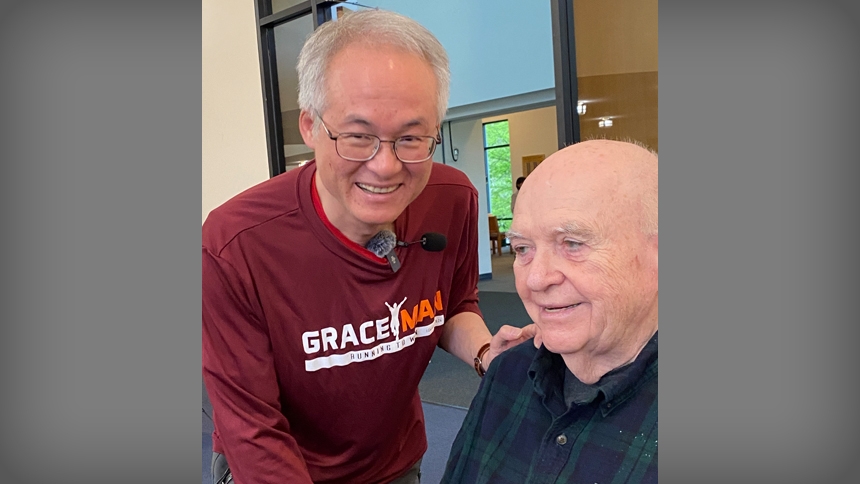
As my mother neared death at age 97, she spiraled into physical and mental decline. Her torrents of verbal abuse laid bare her pain and suffering, and as her primary caregiver, I was often the target of that bitterness.
I was exhausted, overwhelmed, and devastated. And I wasn’t the one dying.
Friends who have walked the final journey with their parents often insist they will not subject their children to such trauma.
No one escapes pain, suffering or death. We want to spare those we love from suffering alongside us. Fear makes us desperate to take steps to avoid suffering.
Even for people of faith, the phrase “suffering is redemptive” can ring false. Yet some people face their pain — whatever its source — with astonishing strength that can teach us much about the value of suffering.
Peter Le is one such guide. I met Peter at a lecture about his book, "My Life of Grace: How I Found Hope and Purpose in Suffering."
“Graceman,” as he calls himself, has lived a life of suffering since he was one year old and crippled with polio. Encumbered with braces and crutches, he fled communist Vietnam, one among millions. Rescued after days at sea, he moved through three refugee camps in Thailand and the Philippines before arriving in the United States at age 13.
Peter pursued an education, built a career, married, and started a family. Then, in 2018, he was diagnosed with metastatic thyroid cancer and given six months to live — once again entering what he calls “the school of suffering.” Peter writes: “… in this school we learn to let go of what does not matter in this life, and to grow in the virtues we will need in the next.”
For Peter, letting go meant uniting his sufferings with the passion of Christ.
During a biopsy, the doctor hammered a long needle into the tumor on Peter’s back. With each explosion of pain as the hammer hit the needle, Peter placed himself at “the foot of the cross,” visualizing the nails pounding into Christ’s hands and feet. He turned his pain into prayer, silently calling out “Lord” with each blow.
Peter returns to the foot of the cross and surrenders himself to God with each new challenge he faces.
“Sickness is a great teacher of humility,” Peter writes. Forced to endure increasing limitations, “stripped naked” like Jesus, humility breaks us open and allows the suffering Christ to “do the work of the divine physician.” Christ’s grace gives Peter — and us —the power and strength to bear our suffering, and grants us the gifts of patience, peace, courage and hope amidst our pain, suffering and trauma.
Such humility also tenderizes our hearts. Peter’s pain gives him the sensitivity to see the pain of others; he now actively extends kindness and compassion to those he sees are struggling.
Another lesson: the love and mercy of God is most evident when our despair is greatest. When his initial treatments failed, Peter fought the temptation to numb himself with alcohol. Instead he sat in a chapel, weeping uncontrollably, and heard God whispering gently into his ears, saying: “I know.” Peter knew then with certainty that Christ and his mother walk beside us in every struggle. Peter was filled with joy.
Cancer continues to ravage Peter’s body, yet he remains a living miracle of God’s grace.
On April 24 and 25 he appeared on EWTN’s Women of Grace program and spoke with host Johnette Williams about suffering. The program, titled Royal Road: The Joys of Suffering, is available in part one and part two.
His experience teaches people that we have a choice in our times of suffering. We can rage against our circumstances and become bitter, or we can carry our cross along with Christ, open ourselves to his grace, and find both consolation and redemption.
My own experience with suffering taught me some hard, yet valuable, lessons. When the fear of future suffering paralyzes me, I place my hope in Christ’s words: “Be not afraid.”
Christ is our light in the darkness. “Come to me, all who labor and are heavy laden, and I will give you rest.” [Mt 11:28]

